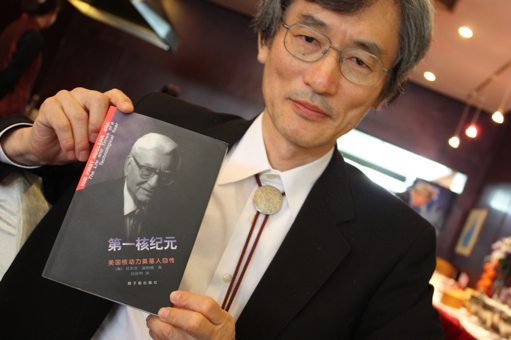Turning Japan's nuclear past into its future


One of the biggest problems associated with nuclear power is what to do with the waste - the radioactive leftovers like plutonium that live on posing health and weapons risks.
But amid today's broad social zeitgeist of sustainability and recycling, shouldn't there be a use for the stuff?
Yes there should, says one small Tokyo-based company. If you build entirely different and better nuclear reactors than those that operate today, you can burn waste as fuel.
The company, Thorium Tech Solution (TTS), wants to combine the plutonium and other "actinides" from Japan's 50-some reactors into liquid that would also contain thorium, the alternative to today's uranium fuel that many people believe offers safety, cost, efficiency and anti-weapons advantages.
TTS' design is called a liquid molten salt reactor (MSR), and is based on U.S. government work at Oak Ridge National Laboratory in Tennessee. Oak Ridge built an MSR in the 1960s before President Richard Nixon cancelled the project in favor of solid fuel reactors that leave waste such as plutonium - desirable for weapons in the Cold War.
MSR fuel circulates at much higher temperatures than the levels at which uranium burns in conventional solid fuel reactors. That increases the efficiency of the generating process. The liquid design also underpins many safety features. Among them: The reactor cannot melt down.
That should appeal in Japan, which shut down all but two of its 50-some reactors following meltdowns at its Fukushima Daiichi power plant two years ago. Nuclear had provided 30 percent of the country's electricity. Japan is paying high economic and environmental costs to compensate.
TTS' reactor will compete against solid fuel "fast reactors" that also burn waste. And the company faces challenges including funding. With the right backing, this idea should flow.
Photo by Mark Halper
A few stops along SmartPlanet's alternative nuclear trail:
- New York Times recognizes thorium and other alternative nuclear power
- MIT experts: Nuclear exit would cost U.S. environment, economy
- And the DOE energy innovation award goes to … a new type of nuclear power
- Russia banks on Vietnamese nuclear
- Top scientists recommend alternative nuclear for UK
- Nuclear fusion from Google, Lockheed, Draper Fisher
- Just a partial nuclear restart would save Japan $20 billion
- How Greenland will prop up the world economy
- Lights! Cameras! Atoms! Sundance to debut pro-nuclear film
- Nuclear heat is on in Norway
- Son of China’s ex-President: Thorium will help shape country’s energy future
- Norway ringing in thorium New Year, with Westinghouse at the party
- Virgin Nuclear? Branson asks Obama for reactor help. Sir Richard v Bill Gates?
- Westinghouse enters U.S.-China nuclear collaboration
- The Thorium Lord
Click here for an archive of nuclear stories
This post was originally published on Smartplanet.com